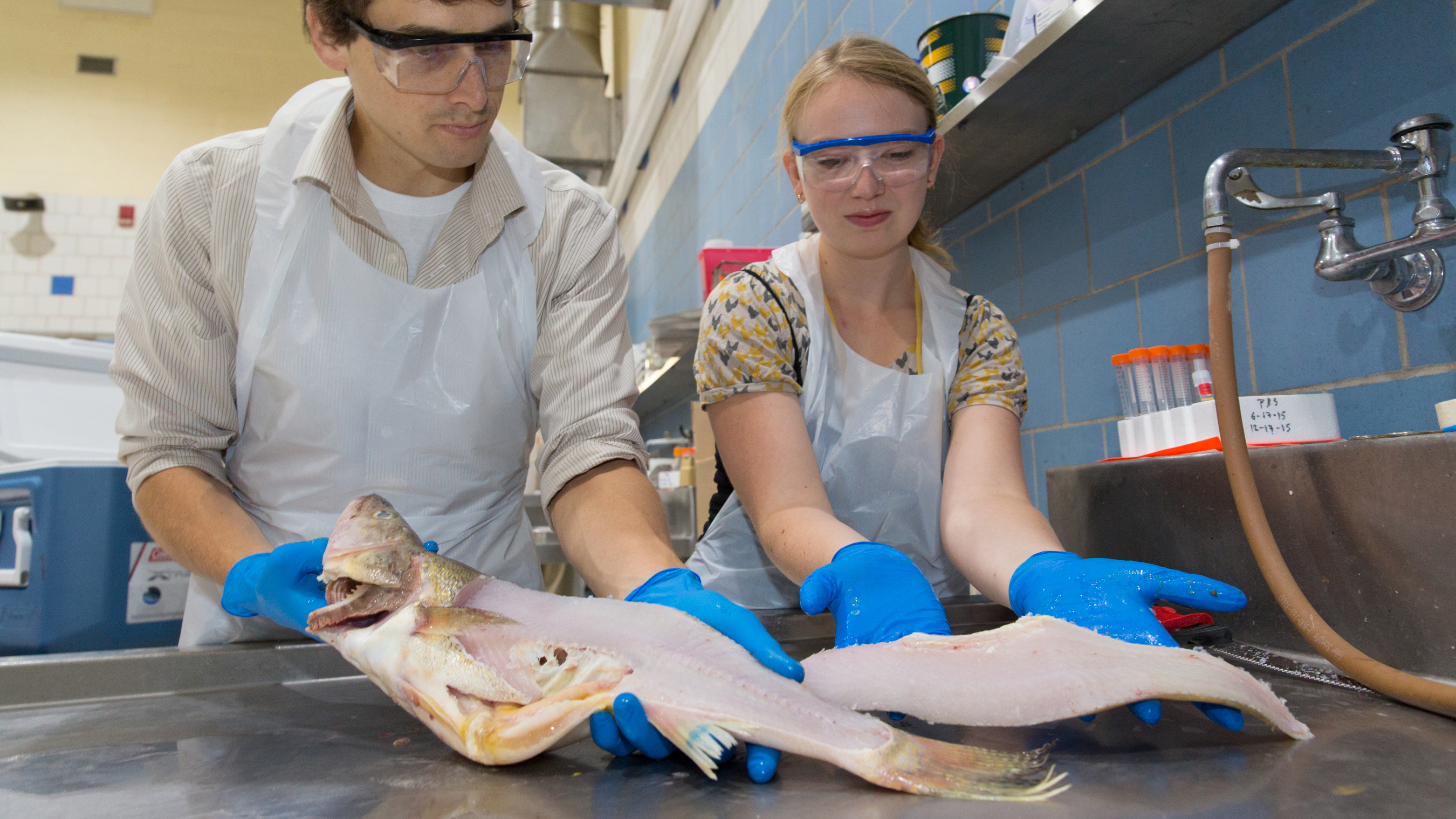
This project was a comprehensive assessment of the impact of heterosporosis on the harvestable biomass of yellow perch in a Minnesota lake. Results can be used to infer impacts to the fishery resource in general. This project also identified and addressed important knowledge gaps related to H. sutherlandae ecology, and prioritize future research to address the knowledge gaps that remain.
Heterosporosis was discovered in Leech Lake in 1990 and has since been detected in ~30 waterbodies and over a dozen species. Heterosporosis was identified as a high research priority by the 2014 MAISRC Research Needs Assessment because it can infect up to 40% of fish and we knew little about the disease or its population-level effects. This disease is caused by the parasite Heterosporis sutherlandae, which damages the skeletal muscle of susceptible fish and renders them unfit for human consumption, and can result in direct mortality.
The objectives of this project were to collect data to better understand this disease, and to estimate the threat that heterosporosis poses to perch harvest in a typical Minnesota lake. Researchers collected perch and other fishes from Leech Lake seasonally from fall 2015 to winter 2017, and from Cass and Winnibigosish lakes in fall 2015 and 2016. Heterosporosis was rare among all species, seasons, and lakes. We detected the disease in only 9% of perch, and 20-30% of these fish had visible muscle damage. Heterosporosis did vary seasonally, and infected perch were not more susceptible to angling. In the lab, we found a 32%-34% infection rate when fish were fed infected tissue and a 2%-17% infection rate with passive transmission from co-habitating healthy and infected fish. We found no evidence of a relationship between growth or survival and infection. We used this and other information to develop a population model that suggested that heterosporosis can have short-term impacts on yellow perch harvest (e.g., in a naïve population or after a bad year), but that long-term impacts are unlikely. Sensitivity analysis indicated that disease associated parameters had little effect on overall harvest. Based on the results of this project, we do not consider heterosporosis to be a significant threat to Minnesota fish, but recommend further research to improve the model, because threats to aquaculture or laboratory fish may be higher.
